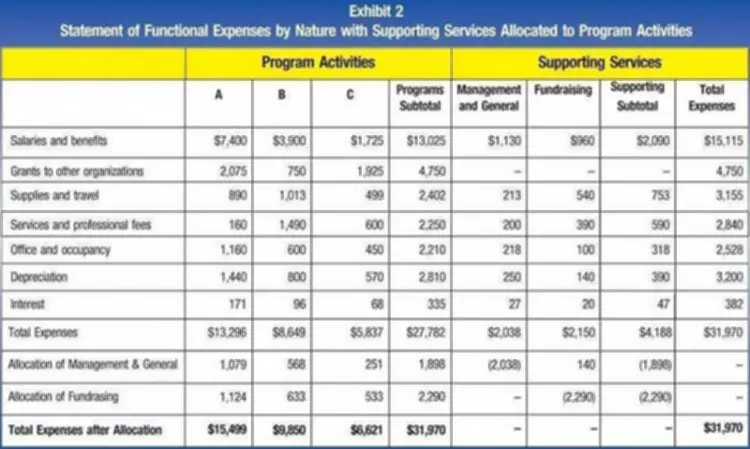Profit & Loss Budgets vs Income Statements Chron.com
Content

With them, you can monitor your revenues and expenses over time, in comparison to your budget, forecast, or industry benchmarks. Additionally, you can identify your sources of income and major cost drivers, analyze your trends and patterns, and evaluate your financial goals and strategies. This allows you to spot any potential issues or opportunities for improvement, and make informed decisions based on your results. Investors and analysts can use this information to assess the profitability of the company, often combining this information with insights from the other two financial statements. For instance, an investor might calculate a company’s return on equity (ROE) by comparing its net income (as shown on the P&L) to its level of shareholder equity (as shown on the balance sheet).

The above example is one of the simplest types of income statements, where you apply the values of income, expense, gains and loss into the equation to arrive at the net income. Since it is based on a simple calculation, it is called a single-step income statement. You may want to have your accountant prepare the P&L for you, since the profit and loss statement must also include cost of goods sold, taxes, and interest expenses. Some business software can help you prepare it yourself, but it’s up to you as to whether you think you can prepare it accurately or whether you would rather have a financial advisor or accountant do it for you. If you’re doing a yearly P&L, then the profit and loss statement includes all income or sales for the year and all expenses for the year.
What is a balance sheet?
Income statements are used to show the net worth of a company at a specific period of time. Profit and loss accounts are used to determine what each individual equity shareholder is entitled to as a profit from the company at a specific period of time. The P&L or income statement, like the cash flow statement, shows changes in accounts over a set period of time. The balance sheet, on the other hand, is a snapshot, showing what the company owns and owes at a single moment.
Is income and revenue and profit the same?
The actual amount received by the company through its business activities without any deduction is known as revenue. The surplus remained after reducing all expenses from the revenue is known as profit. The actual earnings of the company during a particular accounting year is known as income.
Total revenue includes both the money a company has brought in from sales of products and services in the current period, as well as any money from past sales that is still owed to the company. The balance sheet and income statements complement one another in painting a clear picture of a company’s financial position and prospects, so they have similarities. It may go by other names, including the profit and loss statement or the statement of earnings.
How Do You Calculate a Profit and Loss Statement?
Major overhauls of equipment or maintenance that extend the life of the asset must be capitalized (that is, depreciated over the asset’s useful life and not deducted from income as an expense). For managerial purposes, general and administrative expenses are considered managed costs. They are controlled by the decisions of management and not directly tied to sales or production. Another difference is that some income statements may show your earnings per share (EPS), which is your net income divided by the number of shares outstanding. This is a useful metric for investors and shareholders, as it indicates how much of your profits are attributable to each share. Some P&L statements may not show your EPS, or show it in a different section.

If you want to know how your company is doing right now, then use the balance sheet. If you want to see how your company has performed over the past year, use the P&L. The details are important because they also show potential lenders if the business can pay its debts. No items may be presented in the statement of comprehensive income (or in the income statement, if separately presented) or in the notes as extraordinary items. All non-owner changes in equity (i.e., comprehensive income) shall be presented either in the statement of comprehensive income or in a separate income statement and a statement of comprehensive income.
Expenses and Losses
Because you must account for all sources of income and all expenses, it’s important for you to keep accurate business records. Primarily used by service-based industries and small businesses, the single-step method determines net income by subtracting expenses and losses from revenues and gains. The goal of a P&L report is to measure a company’s profits by subtracting expenses from income and provide an overview of the financial health of the business. Cost of Goods Sold – Total price paid for products sold during the accounting period, plus transportation costs to acquire the goods.
- If you sell multiple products or services, you can break them down across multiple product or service lines on your P&L.
- This can be helpful in understanding a company’s liquidity and financial stability.
- You can use this guide to create a profit and loss statement for your business.
The P&L statement is one of three financial statements that every public company issues on a quarterly and annual basis, along with the balance sheet and the cash flow statement. It is often the most popular and common financial statement in a business plan, as it shows how much profit or loss was generated by a business. Reducing total operating expenses from total revenue leads to operating income (or loss) of $69.92 billion ($168.09 billion – $98.18 billion). This figure represents the earnings before interest and taxes (EBIT) for its core business activities and is again used later to derive the net income. It received $25,800 from the sale of sports goods and $5,000 from training services. It spent various amounts listed for the given activities that total of $10,650.
Income statement format with the major components
For example, if you sell products versus services, have multiple types of income, or have lots of expenses. By understanding the income and expense components of the statement, an investor https://www.bookstime.com/ can appreciate what makes a company profitable. While the terms “profit and loss statement” and “income statement” are used interchangeably, they have distinct differences.
More specifically, it shows the net profit or loss your business has made within an accounting period after deducting all expenditure from the income. A net profit is earned if the total expenditure is less than the sales amount, and a net loss is if the expenditure is greater than the sales amount. The balance sheet is the cornerstone of a company’s financial statements, providing a snapshot of its financial position at a certain point in time.
What’s the Difference Between a Profit and Loss Statement and an Income Statement?
Direct Labor – The cost of labor to convert raw materials into finished products. Direct Labor is included in the cost of goods sold for manufacturers.Back to https://www.bookstime.com/articles/profit-and-loss-statement main document. For manufacturers, if containers or packaging is an integral part of the product, then these expenses are included in the costs of goods sold.
